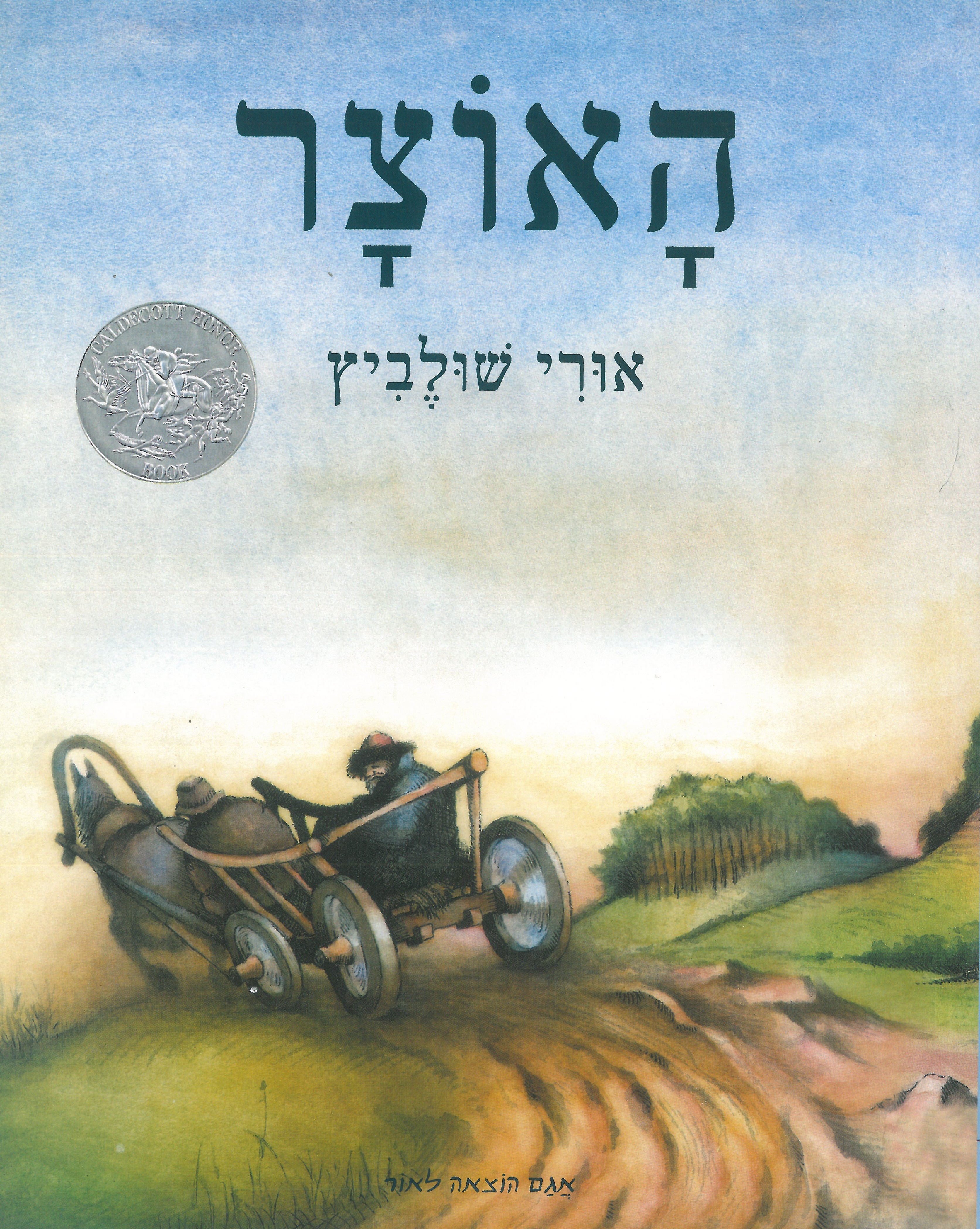Притча о кладе
Автор и иллюстратор: Ури Шульвиц
Дорогие родители!
Кто из нас не мечтал найти клад? Всем нам кажется, что сокровища таятся где-то далеко, однако, как выяснил Ицхак во время путешествия в большой город, часто самое ценное находится совсем рядом, нужно только отыскать его прямо у себя дома.
«Старался и нашел – верь»
Сказал рабби Ицхак: если скажет тебе человек: «Старался и не нашел – не верь», «Не старался и нашел – не верь», «Старался и нашел – верь» (Вавилонский Талмуд, Трактат Мегила, 6, 2)
«Притча о кладе» - это рассказ о мечтах и странствиях. Ицхаку три раза снится один и тот же сон, но только на третий раз он прислушивается к нему и выходит на поиски клада. Иногда, когда мы верим мечтам и покидаем привычное и удобное место, нам открывается новое, и мы находим сокровища – далекие и близкие.
Хасидская история – жизненный урок
У хасидской «Притче о кладе» много версий. Хасиды придают притчам большое значение, в них отражается мировоззрение хасидов, их духовные ценности и принципы воспитания. Важность притчи в жизни хасидов основывается на предположении, что с ее помощью человек может сделать себя и окружающий мир лучше.
Обычно рабби рассказывал хасидам притчи и аллегории, которые должны были заставить их взглянуть на мир с другого ракурса. Предложенная нашему вниманию притча повествует о том, что рядом с каждым из нас есть сокровище, может быть, даже внутри нас, но чтобы найти его, нужно проделать большой путь.
Читаем и играем дома
• Иллюстрации Ури Шульвица показывают другой образ жизни, другую эпоху. Спросите у малышей: если бы действие происходило сейчас, что было бы иным на этих иллюстрациях? Нарисуйте вместе с детьми иллюстрированную брошюру с той же историей, но в знакомом нам современном окружении.
• В притче не говорится, какой именно клад ищет Ицхак, почему он должен отправиться на поиски сокровища, и в результате вернуться в исходную точку. Интересно побеседовать об этом с детьми и выслушать их соображения на этот счет.
• Воспользуйтесь возможностью рассказать детям о том, чего вы достигли после многих стараний и усилий, и о приятных чувствах, которые доставляют такие достижения. Стоит также выслушать желания и мечты ваших детей и поддержать их в стремлении осуществить эти желания.
• Предложите детям стать вашими проводниками в путешествии по собственному дому. Возможно, вам откроется много нового. Закройте или завяжите глаза платком и позвольте малышам провести вас к «сокровищницам», о существовании которых вы и не подозревали. Дети могут дать вам потрогать свои любимые вещи. Сможете ли вы распознать их на ощупь? А теперь поменяйтесь ролями и проведите по дому детей.
• Ищем клад дома! Спрячьте в доме «клад», который дети должны найти с помощью записочек-указателей. Детям понравится разгадывать намеки, которые вы внесли в указания, и находить разные потайные места в доме.
• «Иногда приходится идти далеко, чтобы найти то, что так близко». Обращали ли вы внимание на то, как бывают рады ваши дети вернуться в свой дом после путешествия или отпуска? Какие «сокровища» хранятся в каждой комнате? Что так радует нас, когда мы возвращаемся домой?
• Рядом с домом тоже можно найти «сокровища», которые дети будут рады обнаружить, а может быть, и собрать. Можно вместе выйти из дома на их поиски, вместе найти подходящий «клад», принести его домой и выделить детям специальный уголок для его хранения.
Приятного вам чтения и плодотворной беседы!











